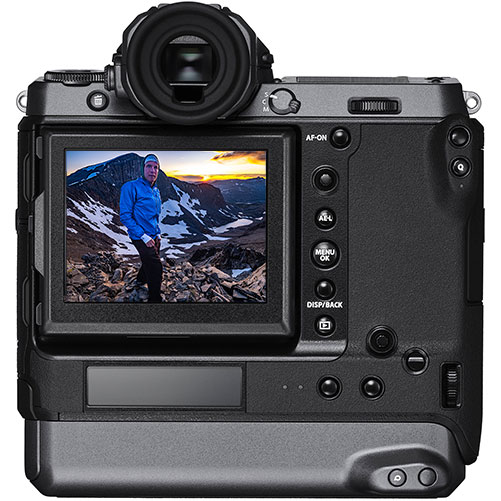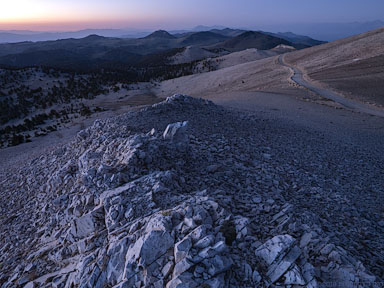Landscape Photographers Looking for Superior Results and Lowest Effort and Fewest Problems Go with Fujifilm GFX100, not Sony A7R IV
Setting aside the price of the Fujifilm GFX100 I make the case here that a landscape photographer or anyone with similar demands is far better off with the Fujifilm GFX100 in a way that never mattered so much before.
Several weeks of intensively shooting the GFX100 in the field showed me that for those who can afford it, there is no other rational choice for those who value the best results with the least effort and the highest reliability.
Cost
While the GFX100 is currently about $10000 and the cost of the Sony A7R IV is currently about $3500, I expect the GFX100 to be available at a substantially lower price within a year. I can’t afford a GFX100 any more than most of you reading this, but I can recognize the true value for someone serious about making the best images with the least effort.
Since the cost of the appropriate best lenses is little different between the systems (particularly when those $500 Fujifilm lens rebates pop up, bookmark this page), it narrows the system cost difference significantly. Both are expensive, but what is most expensive is buying the pretty good system and then selling it for the better one.
For now, the price difference is untenable for most of us, but give things a year to settle.
Background
The Sony A7R IV and Fujifilm GFX100 share the same base sensor technology: same 3.7 micron pixel size, same generation of sensor technology. Electronics of the camera differ and that matters too, but they are pretty much the same in terms of what a pixel can do.
Since the photosite size of 3.7 micron is the same for both cameras, the effects on resolving power per pixel and diffraction effects are essentially identical, barring any special boost by whatever custom stuff Fujifilm has done for the sensor it is using in the GFX100—unclear if anything. But it’s safe to say that the two cameras will behave quite similarly.
The 3.7 micron photosites are tiny, the smallest yet for 35mm sensors and medium format sensors. These tiny pixels are unforgiving; they (1) demand another stop of depth of field versus the Sony A7R III pixel density for the same per-pixel depth of field, and yet (2) diffraction kicks in a stop earlier—in effect a two stop squeeze—you ought to stop down one stop less but you need to stop down one stop more! Using a shorter focal length for the same FoV on the Sony helps a little with depth of field, but it doesn’t save you muchfor a focus stack (e.g., maybe 6 frames instead of 7 or 8).
The only way to get maximum sharpness from either camera is via focus stacking at (no more than) f/8. And f/8 is already visibly degraded over f/5.6, just as f/11 was/is visibly degraded over f/8 on the Sony A7R III/II.
Fujifilm GFX100: Focus Stacking is All But Mandatory for Landscape and Similar
For landscape photographers and anyone shooting subject matter with similar near/far demands, it’s simple: if you’re not doing focus stacking, you are losing out big time. You will not get full sharpness on either camera without focus stacking—you will get a thin zone of peak sharpness which rapidly falls off to far less than the resolving power the sensor. Lots of photographers fool themselves on this point, but it is already an issue with lower resolution existing cameras like the Sony A7R III and Fujifilm GFX-50S/R.

How much effort and how much risk of issues for focus stacking?
The ability to bang off a 7 or 13 or 23 frame focus stack in a few seconds with the GFX100 is a HUGE operational win, even if I have to shoot the last infinity frame manually (GFX100 bug). Sony lacks focus stacking support—frustrating and inexplicable by any technical reason. Automated focus stepping for focus stacking is crucially important:
- Fast automated focus stepping reduces issues from lighting changes between frames, which the stacking process in effect sees as detail changes—a huge PITA that causes the need for excessive retouching. So getting the stack done fast is a huge help.
- Fast automated focus stepping reduces issues from movement, such as wind or water or clouds. Again, this saves a ton of time by less need for retouching.
- Fast automated focus stepping eliminates the risk of error between steps. A single error ruins many a stack.
- Fast automated focus stepping can in effect focus on thin air or on things which cannot be focused on, at least not accurately. Such frames are critical in many cases to avoiding haloes around edges; getting it wrong causes severe problems in some cases.
- Fast automated focus stepping is critical at dusk, where it is too dark to focus at all, except up close with the aid of artificial light. Having to focus manually makes stacking very difficult, requiring estimation, which is extremely error-prone.
- Fatigue factor: having to manually focus is fatiguing for a 10 frame stack, let alone 40 of them over the day. My eyes get tired and are not always at 100%.
There you have it—focus stepping has to be built-in (half-assed PlayMemories app for Sony is not a solution), it has to be automated, built-in, and do it right. Nor is having to use a phone to control the camera acceptable, not to me at least, certainly not in my normal field conditions.

What about panoramas to make up the resolution difference?
With the GFX100, you get ~67% more pixels on a ~67% larger sensor—a lot more detail at least as good per pixel quality, whether single frame or focus stack or panorama.
With the Sony A7R IV, just to get to equivalent resolution with a panorama, you have to shoot 4X as many frames with the Sony A7R IV (assuming 1/3 overlap between frames). For example, shooting 4 frames yields 2/3 + 1/3 + 1/3 + 2/3 frames = 2 frames = 120 megapixels. Except that the stitching process is never as sharp as a single shot camera even done perfectly, and all sorts of things can go wrong and join areas never are fully sharp. So at best I’m going to call this 100 megapixels equivalent.
Plus Sony demands uncompressed raw if you want peak quality, with a huge headache from huge files—the A7R IV will use about 4X more space than the GFX100.—that’s because no compression means average Sony A7R IV file sizes are usually larger per frame versus the GFX100 with its lossless-compressed raw format—a ridiculous state of affairs. Or you can use Sony lossy compression format—acceptable but not ideal.
Next, consider the post-shooting workload: even assuming you get 100+ megapixels out of the Sony A7R IV by shooting a 4-frame panorama, you have 4X the shooting effort, much higher risk of issues including missing the best light or exposure and considerably more work with the Sony files (versus just a single frame for the GFX100). It makes the whole experience suck. So you don’t do it—well I won’t at least.
With the GFX100, you shoot a single frame or a single focus stack, but with the Sony A7R IV you have to do that 4 times minimum for equivalent results. That is a guaranteed hassle with a very high risk of problems under so many field conditions that I shoot in.
What if you want to focus stack a panorama? Now the workload is also 4X harder in doing the stacking—4X the shooting effort, 4X the workload and much higher risk of all sorts of problems. With one focus stack taking an hour (typical best case for picky people like me), four of them means half a day’s work, with odds very high that something is not going to work out so well, at least under the field conditions I shoot in.
Taking the shooting effort and post-shooting work together, I say that using the Sony A7R IV versus the GFX100 for a focus-stacked panorama is 10X the effort and 6X the effort even without focus stacking, with a vastly higher risk of issues when shooting (execution errors, lighting changes, subject movement, etc). I say 6X the effort, because it’s a hell of a lot easier to shoot one frame (GFX100) than to level the tripod just-right, use a nodal slider appropriately and shoot 4 frames (A7R IV) making sure to get the overlap just right—all while lighting can change or movement can occur.
The smart move
The Sony A7R IV is not a serious solution for the landscape photography or similar photography for reliable top-shelf results—the Fujifilm GFX100 is far superior for single-shot, for focus stacking, and especially for panoramas.
The 100-megapixel image below is found in Fujifilm GF 23mm f/4 Focus Stacking, White Mountains.

Fujifilm GFX100 + Fujifilm GF 23mm f/4 R LM WR @ 19mm equiv (23mm)
ENV: Outcrop above Patriarch Grove, altitude 11650 ft / 3551 m, 45°F / 7°C
RAW: Enhance Details, LACA corrected, distortion corrected, vignetting corrected
[low-res image for bot]






























